Sound Localisation Analysis of a Videorecorder
Intro: Acoustic Camera
The Acoustic Camera consists of a PC-based 16-channel data recorder and the software PSI-Tools (Parallel and Serial Interference Tools) to reconstruct acoustic images from microphone records. PSI-Tools in the minute is the most selective tool for acoustic excitment mapping in the world. The new core algorithm, called H-Interference Transformation (HIT), is nearly ten times more accurate then other, known algorithms. Thus, PSI-Tools is the first, that produced acoustic images going around the world because of the high quality.
It includes a powerfull, very extensive help-file system, which includes all relevant data.
First, PSI-Tools approximates the time-function for each pixle of the sound image. Second, PSI-Tools take the effective value or the maximum of these time function to colorate the pixle.
Software PSI-Tools 
PSI-Tools under Windows 95/NT
PSI-Help File System

PSI-Surface
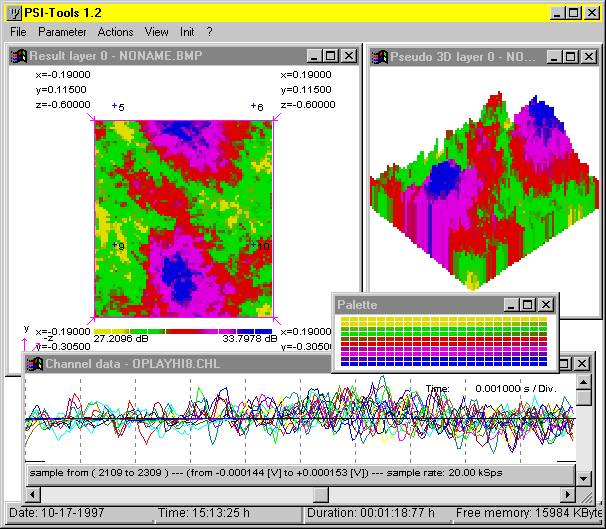
The channel data (Hi8-recorder in play mode) come from 16 microphones. They cary very different signals. The differences allow to transform the channel data into the excitment location map using the authors Interference Transformation (HIT)
PC-controlled 16-Channel Data Recorder
The portable PC-Pentium with analog-digital converter, preamplifier and microphone array allows to sample 16 channels in parallel with sampling rates until 50 or 100 kSps. For more, see the authors homepage.
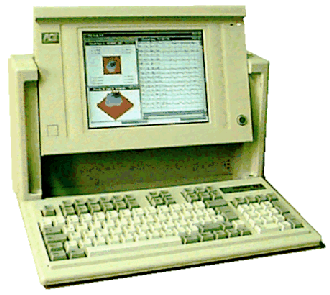 b)
b)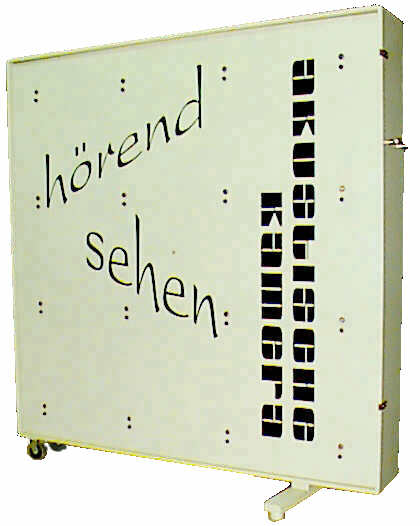 c)
c)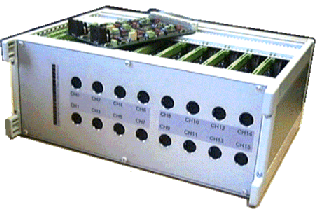
a) Portable PC
PC-Pentium with a full size AT-bus-slot
b) Microphone Array
For measurements about to a distance of 30 meters we use precise calibrated measuring microphones (µo = 1µV for 0dB, 20 Hz...20kHz). To access definitive locations for the 16 measuring microphones, they are arranged within an orthogonal array with a grid size of 30 cm. To avoid reflections, the microphone membranes have been placed planar to the front wall of the device. Included in the array is the 16-channel, 32-bit per channel programmable preamplifier (d).
c) 16-Channel Softcontrolled Preamplifier (within the microphone array):
- ultra-noise-optimisation for very low signals
- input range 10µV to 20Vpp in 16 stages
- complete 32 bit - softcontrolled without any switch, soft-initialized
- save set of custumer initialisations on startup via *.INI-file
- 32 switches per channel
- frequency range -1dB 0.05Hz to 50kHz
- double low-pass filter before AD-Conversion switchable in six stages each
- double high-pass filter before AD-Conversion switchable in eight stages each
- external/internal trigger to start conversion
- sync-output before conversion start possible
- sample rate max. 50kHz (100kHz) per channel, dependend of used PC-ISA-Bus
- volume 35x14x26 cm
- CE-verified power supply 230V~
Experimental Arrangement
Co-ordinate system of the array a) and arrangement between array and device b)
a)  b)
b) 
Acoustic Images
As not noted otherwise, pixle resolution is 1cm x 1cm. All channel data are filtered with a double RC-highpass with corner frequencies 100 Hz and 1000 Hz. This produces roughly a dB(A) type of images.The following sound images are calculated with 'lightning automatics'. Find the colors enclosed in the range between minimum and maximum interference value. The drawn co-ordinates are relative to the laser axis of the microphone array. A central laying laser beam marks the negative z-axis, beginning in the point (x,y,z) = (0,0,0).
Videorecorder in Frontal View, Cover is Closed,
Distance to Array 30 cm
Pixle resolution is 1cm x 1cm.
 Photo
Photo

Find a Hi8-drive at the left side and a VHS-drive at the right side.
 Mode: Fast Forward
Mode: Fast Forward
Hi-8 is running:
max.: 
eff.: 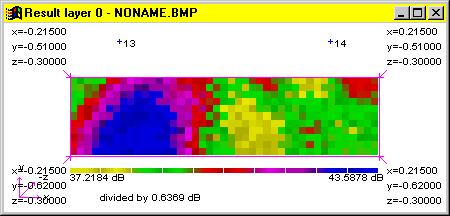
VHS runs:
max.: 
eff.: 
 Mode: Play
Mode: Play
Hi-8 is running:
max.: 
eff.: 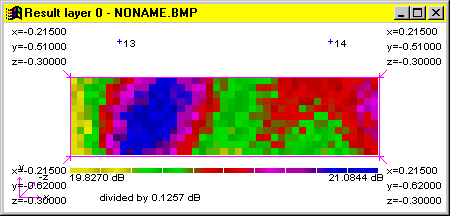
VHS runs:
max.: 
eff.: 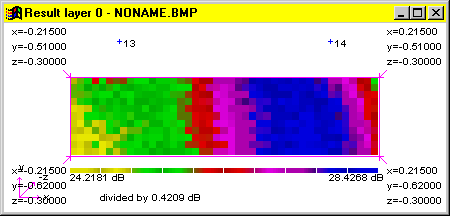
Videorecorder in Bottom View, Cover is removed,
Distance to Array 60 cm
Pixle resolution is 1cm x 1cm.
 Photo
Photo

Find the Hi8-drive at the bottom and the VHS-drive at the top,
the front panel is now on the right side.
 Mode: Fast Forward
Mode: Fast Forward
Hi-8 is running:
max.: 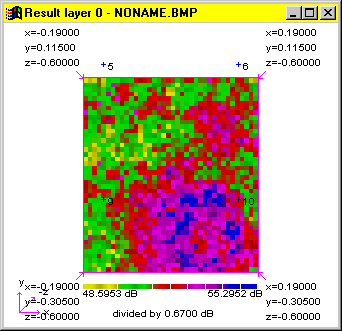
eff.: 
VHS runs:
max.: 
eff.: 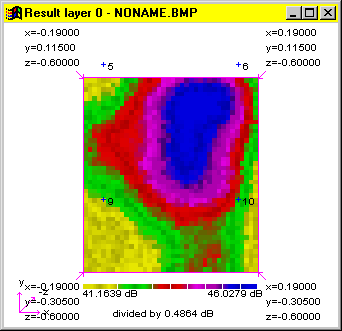
 Mode: Play
Mode: Play
Hi-8 is running:
max.: 
eff.: 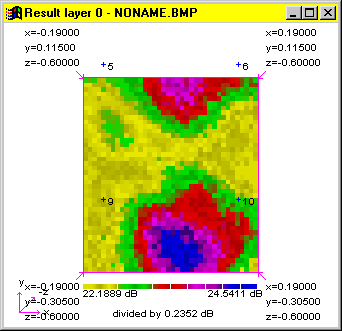
VHS runs:
max.: 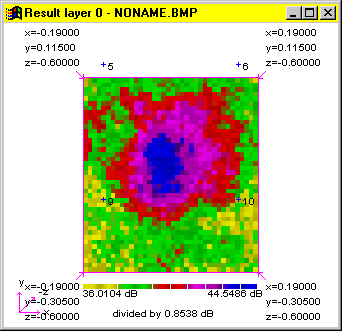
eff.: 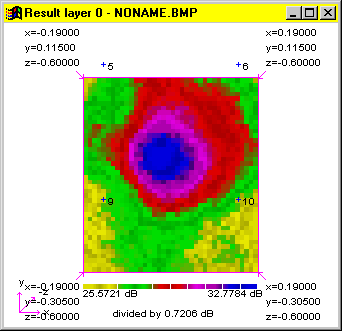
PS: Channel recording was on Thursday, 16. October 1997. Pictures were calculated on Friday morning (17th). Short report written on Friday afternoon in HTML.
Mail send? info@gheinz.de
file created 14:38 17.10.1997